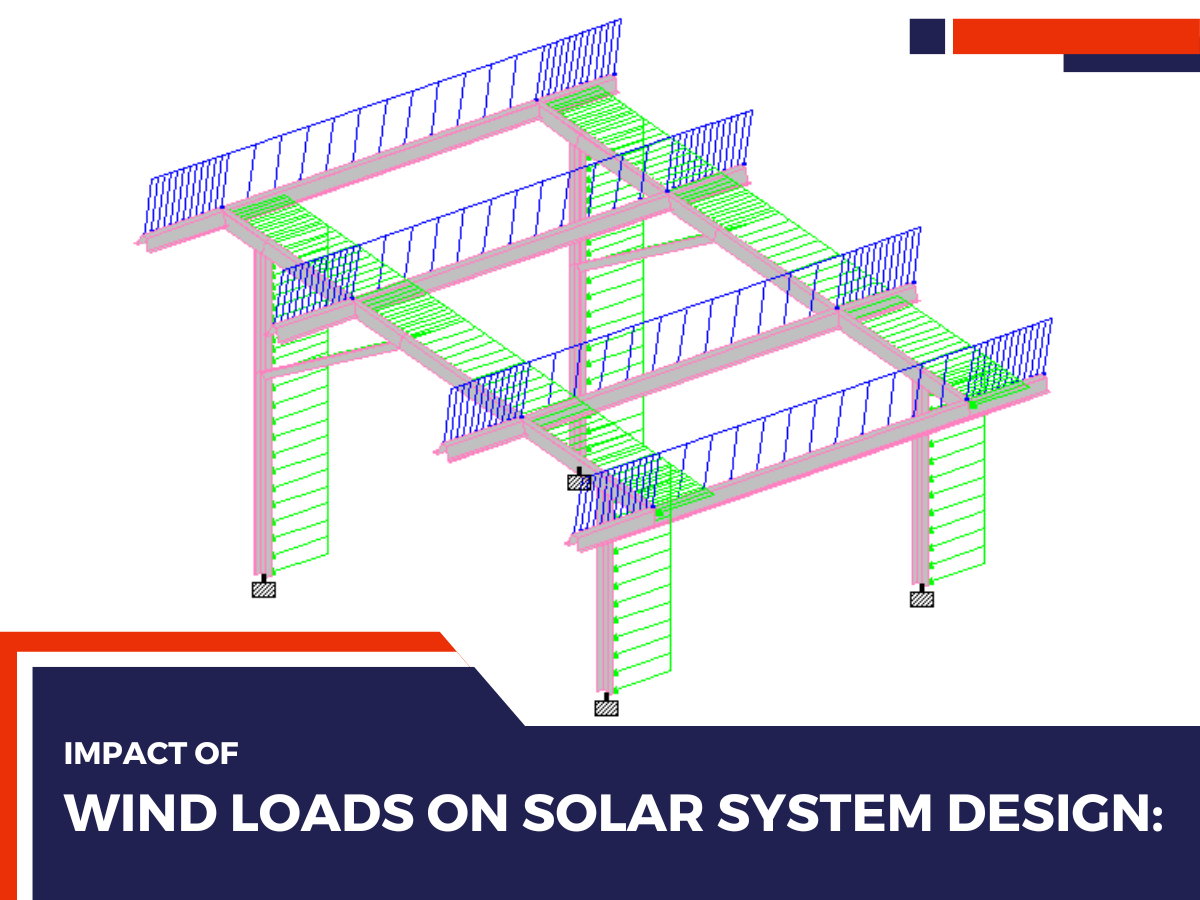As the demand for renewable energy continues to rise, solar power has become an increasingly popular choice for sustainable electricity generation. However, ensuring the structural integrity and safety of solar systems is crucial for their long-term performance and reliability. One critical factor that can significantly impact solar system design is wind loads. In this blog post, we delve deeper into the impact of wind loads on solar system design and emphasize the importance of professional engineering in mitigating potential risks.
1. Understanding Wind Loads in Solar System Design:
Wind loads refer to the forces exerted by wind on structures or objects, and they can have a substantial impact on solar installations. It is essential to consider wind loads during the design and installation process to ensure the structural stability and longevity of the solar system.
Solar panels, mounting structures, and support components are subjected to various wind forces, including:
– Wind Pressure: The force exerted by wind perpendicular to the surface of the panels and structures.
– Suction Pressure: The force exerted by wind pulling on the surface of the panels and structures.
– Shear Forces: The lateral forces that can cause twisting or bending of the solar system.
– Vortex Shedding: The phenomenon where wind flow around an object creates alternating high and low-pressure zones, potentially causing vibrations and fatigue.
2. Risks of Inadequate Wind Load Consideration:
- Structural Failure: Inadequate design practices may result in structural instability, leading to failures such as panel detachment, mounting system failure, or structural collapse. These failures not only compromise the performance and reliability of the solar system but also pose safety hazards to people and property.
- Reduced System Performance: Solar panels that are not designed to withstand wind loads may experience excessive vibrations or deflections, leading to misalignments, shading, and reduced energy production. Suboptimal performance can impact the financial returns of the solar installation and hinder the achievement of renewable energy goals.
- Safety Hazards: In regions prone to high winds or severe weather events, improperly designed or secured solar systems can become dangerous projectiles. Loose panels or mounting structures pose risks to nearby structures, vehicles, and individuals during extreme wind events, endangering public safety.
3. Importance of Professional Solar Engineering:
To ensure the proper consideration of wind loads in solar system design, professional engineering services play a vital role. Here’s why professional engineering is crucial:
- Compliance with Building Codes: Professional solar engineers possess in-depth knowledge of local building codes and regulations, including specific requirements for wind load resistance. They ensure that solar systems meet the necessary structural standards to withstand expected wind forces.
- Site-Specific Wind Load Analysis: Professional engineers conduct detailed site assessments and wind load analyses to determine the specific wind speeds and forces that the solar system will encounter. They consider factors such as terrain, topography, local climate conditions, and historical weather data to accurately calculate wind loads.
- Structural Stability and Resilience: Professional solar engineers design solar systems that can withstand the anticipated wind loads based on the site-specific analysis. They consider wind directionality, gust factors, and safety margins to ensure the structural stability and resilience of the system.
- Collaboration with Structural Engineers: Professional solar engineers often collaborate with structural engineers to validate the solar system design and ensure that it meets the required safety standards. This interdisciplinary approach ensures that the solar system can withstand wind loads while maintaining structural integrity.
Wind loads are a critical consideration in the design and engineering of solar systems. Neglecting to account for wind loads can lead to structural failures, reduced system performance, and safety hazards. Professional engineering services provide the expertise needed to properly consider wind loads, ensuring compliance with building codes, conducting site-specific wind load analysis, ensuring structural stability and resilience

